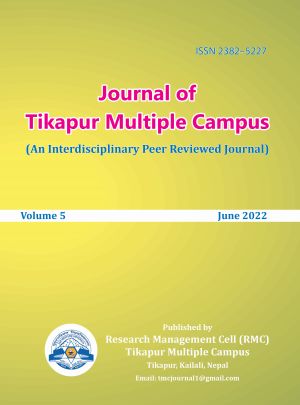Impact of Macroeconomic Variables on Value Added Tax in Nepal: An Error Correction Model
DOI:
https://doi.org/10.3126/jotmc.v5i1.46511Keywords:
Value added tax, revenue generation, autoregressive distributed lag, error correction modelAbstract
This study assesses the impact of macroeconomic variables on Value Added Tax (VAT) revenue in Nepal. VAT plays a great role in the revenue mobilization in Nepal. The reason behind VAT system is that it makes transparency in all kinds of transaction, helps to make the wide area of tax and discourages tax evasion. So it is needless to say that VAT is the most important sources of the government revenue. Data analysis begins with the testing of the unit root of the series to confirm whether the data are stationary or not. Augmented Dicky Fullr unit root test, co-integration test is employed to check the relationship of the variables under study. The results have shown the fact that GDP has positive impact on VAT, CPI and M2 have the positive as well as significant impact on VAT but exchange rate has negative significant impact on VAT. This is the result of OLS method but here model should be further analyzing which ensures the validity of this model. The coefficient of error term has been 3.3 percent meaning that the system corrects its previous period disequilibrium at a speed of 3.3 percent annually. The model is free from hetroskedasticity and residuals are normally distributed which is desirable for the Error Correction Model.
Downloads
Downloads
Published
How to Cite
Issue
Section
License
Copyright (c) 2022 Keshar Bahadur Kunwar

This work is licensed under a Creative Commons Attribution-NonCommercial 4.0 International License.
This license enables reusers to distribute, remix, adapt, and build upon the material in any medium or format, so long as attribution is given to the creator. The license allows for commercial use.




